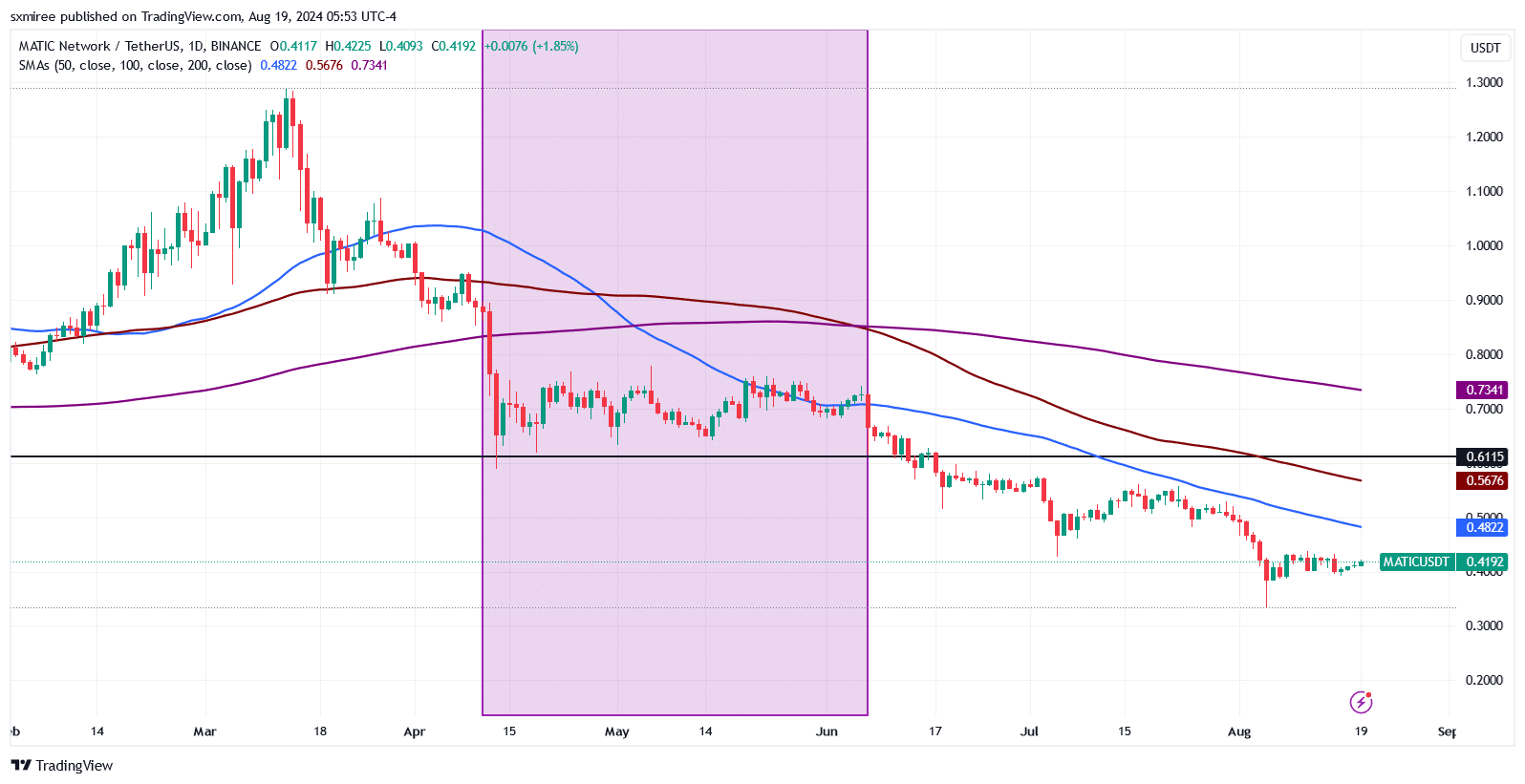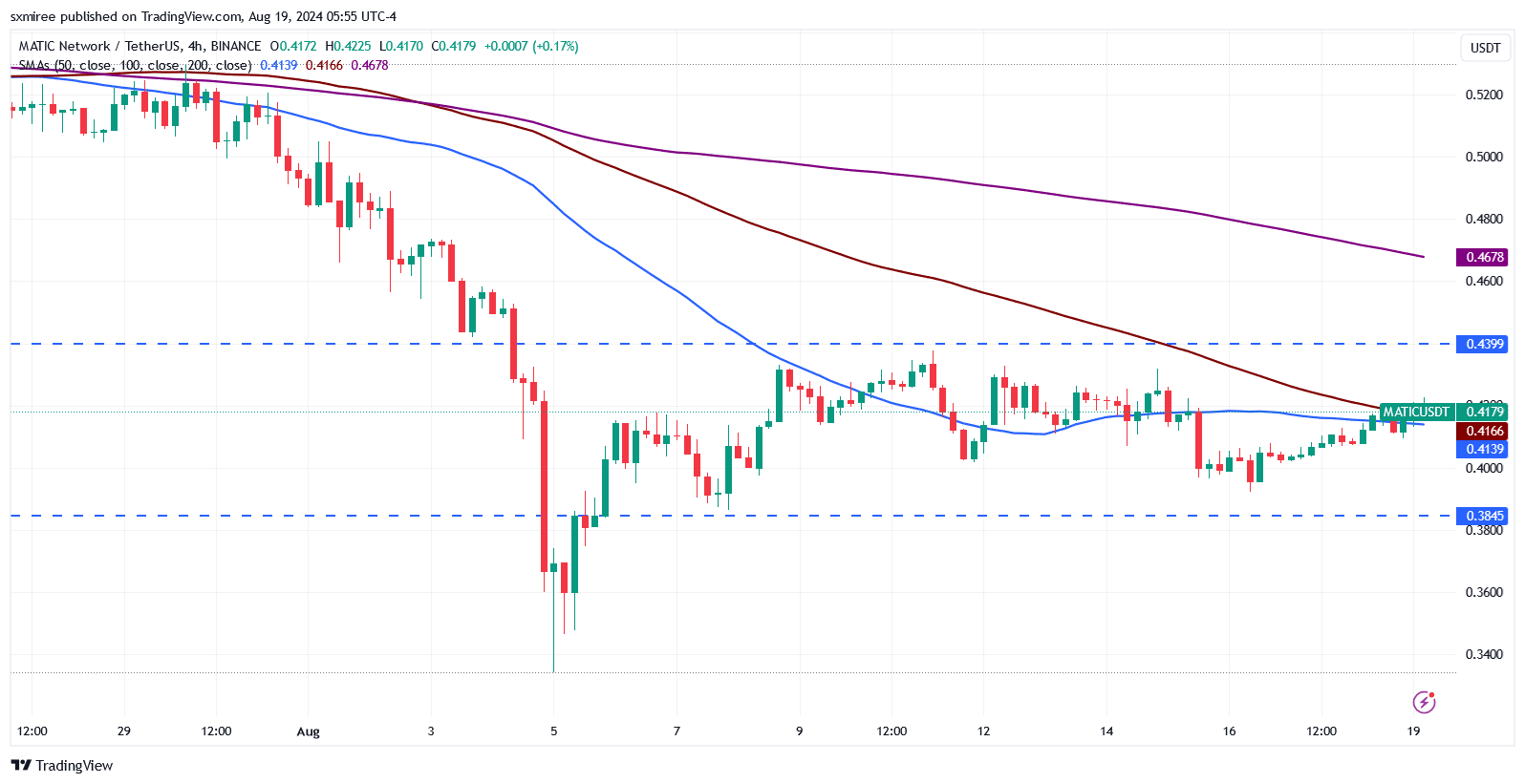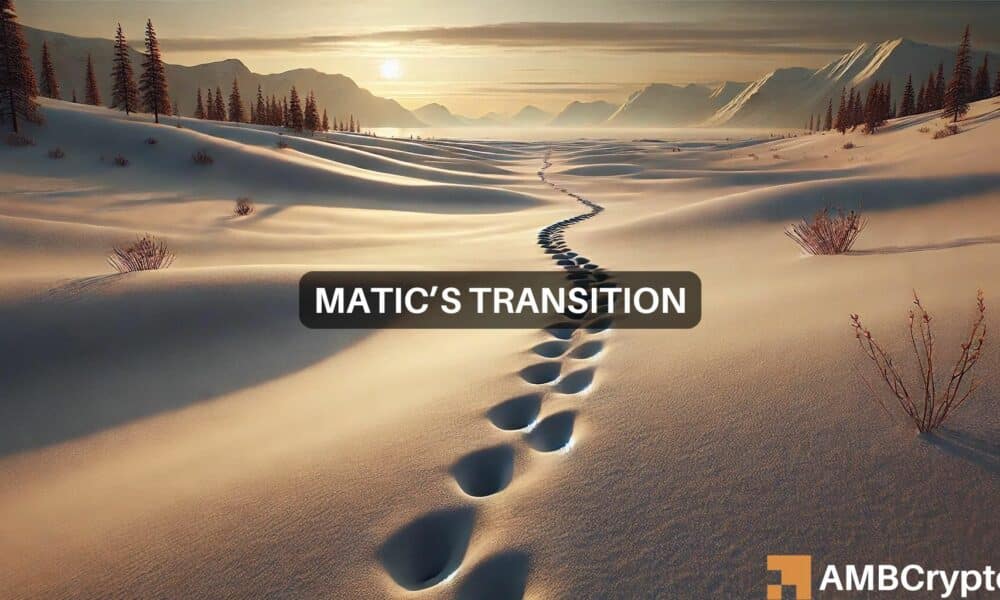- MATIC is currently in a subdued price action in the cycle and is approaching its June 2022 low.
- MATIC holders will be able to convert their balances into multi-purpose POL tokens in September.
Polygon (MATIC) is currently in the process of transitioning to a more advanced decentralized system.
Polygon 2.0, released in June 2023, entails a series of upgrades that redefine Polygon’s token economics, protocol architecture, and governance aspects.
The upgrade also includes improvements to the network’s consensus mechanism to support anticipated growth and scaling demands.
Polygon’s ambition to become a multi-chain solution
Polygon 2.0 introduces a new architecture focused on unlimited scalability and unified liquidity across multiple chains within the Polygon network. The foundational phase began last year with the creation of the infrastructure that would enable the vision for a sophisticated ecosystem.
In September 2023, Polygon Labs released the first set of Polygon Improvement Proposals (PIPs), marking the beginning of the Polygon 2.0 implementation.
A month later, in October, the Polygon development team deployed a smart contract to manage the new Polygon ecosystem token (POL) on the Ethereum mainnet.
Overproductive POL tokens
From a technical standpoint, the next-generation POL token is based on a new smart contract standard that enables efficient and flexible operations within the Polygon ecosystem.
POL’s initial supply limit is 10 billion tokens, with an annual issuance of 1% for the next 10 years.
POL will be a versatile utility token that facilitates better scalability and governance across multiple chains.
POL holders can also participate in securing the Polygon chain through a more advanced decentralized staking model that provides better rewards to stakers.
Migrate from MATIC to POL
The MATIC to POL upgrade was confirmed on September 4th as originally anticipated, and will introduce a new system where POL will replace MATIC as the native gas and staking token for the Polygon PoS network.
The previously rebranded MATIC token was the backbone of the Polygon ecosystem.
This upgrade allows users to swap tokens, which is a significant milestone in the Polygon 2.0 roadmap as it brings about substantial changes to the token economics and governance of the network.
As part of the phase-out process over the next four years, MATIC holders will be required to execute a swap transaction (swap ratio 1:1) to transfer their balances to the upgraded smart contract, after which MATIC will no longer exist.
MATIC price movement
Polygon’s MATIC has been one of the hardest hit alternatives in the current market cycle. MATIC held support at $0.61 between April and June before breaking out of this multi-month consolidation.

Source: TradingView
As of August, the token has lost 10% of its value and could see even more losses amid the prevailing volatility. According to IntoTheBlock data, only 2% of all MATIC holders are in profit, with 1% having reached break-even at current prices.
Although MATIC/USDT bounced off the $0.334 support established on August 5, the price action is still concerning. On the 4-hour chart, the pair has been trading sideways between $0.38 and $0.42 for 3 weeks.


Source: TradingView
Still, the short-term outlook is not all gloomy. Bulls are targeting a further rise to the psychological level of $0.50, which previously provided support, between July 2023 and August 2024.

